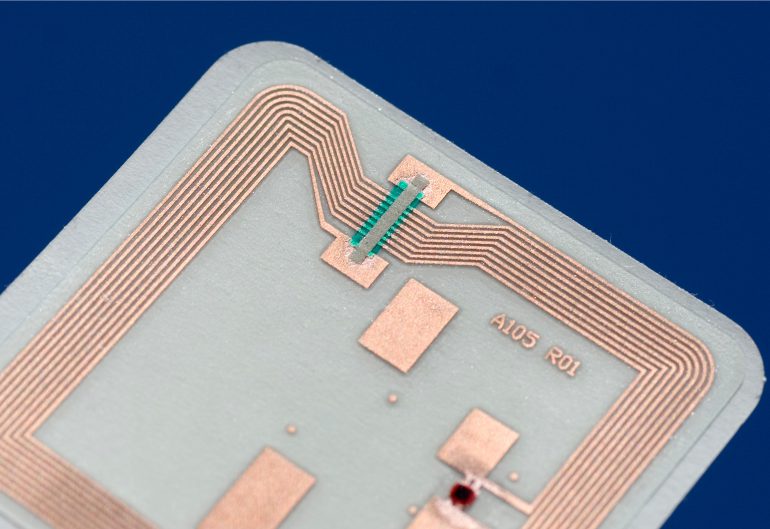From tracking pallets and crates to keeping tabs on library books, RFID tags have been put to many uses. But new research is pushing the tech into new territory.
The simple stickers, equipped with antennas and microchips, are an economic, battery-free solution already popular in supply chain management and retail. But recently engineers and computer scientists in the US have discovered that RFID tags can be applied in areas as diverse as motion tracking, infrastructure monitoring and chemical detection.
Shape and movement
A team of engineers at Carnegie Mellon University (CMU) has developed a system called wireless shape-aware world (WiSh), which uses RFID tag arrays to monitor changes to curves and shapes.
According to Jingxian Wang from CMU’s Electrical and Computer Engineering Department, the tech could be used to monitor the structural integrity of infrastructure including bridges and roads.
To test this theory, the team dragged a string of 50 RFID tags along the 10th Street Bridge in Pittsburgh, USA, to measure its curvature. A computer readout reconstructed the bridge’s shape so accurately, it matched infrastructure surveys.
Wang said this type of low-cost, low-power and low-maintenance technology could make smart cities more feasible.
This tech can also be embedded in fabrics to track posture and body movements for VR gaming, in pillows to track sleep quality, or carpets and floors to detect the location of people in a building.
If commercialised, this could provide an alternative to systems that use a camera to track movement and are limited to the line-of-sight operation.
“By attaching these paper-like RFID tags to clothing, we were able to demonstrate millimetre accuracy in skeletal tracking,” said team member Haojian Jin.
The CMU research team used a single mobile antenna to track RF backscatter from the RFID array to triangulate their positions to track movement through the clothing. Importantly, they were able to monitor the tags without needing to calibrate the antenna.
The WiSh technology also uses a single antenna, but needs a more complex algorithm to translate the backscatter signals into shape data.
According to the developers, the antenna is the most expensive part of the systems, as the RFID tags cost under $1. They suggested that in the future, it might be possible to equip smartphones with higher frequency antennas to cater to RFID applications.
Sniffing out gases
Last year, MIT engineers developed an ultra-high-frequency (UHF) RFID tag-sensor they hope to adapt to sense harmful chemicals or gases and wirelessly communicate the danger.
Their demonstration project consisted of an RFID glucose sensor that monitors levels, and identifies and communicates the presence of spikes.
While the sensor’s ability was below that of commercially available glucose sensors, Sai Kantareddy from MIT’s Department of Mechanical Engineering said the aim of the research was to show their RFID chip-based tag-sensor design could be more reliable than antenna-based sensors.
The developers aim to achieve this by separating a tag’s sensing and communication functions. This means that, unlike passive RFIDs, the MIT design is not dependent on radio waves reflected in the environment.
Because it uses electrodes as well as RF, the MIT tag-sensor has greater communication range than passive RFID and could potentially reduce the amount of readers required for applications. The developers also plan to make the design ‘plug and play’ with commercially available electrodes, rather than needing custom antennas for each application.
By combining the design with electrodes that produce a charge in the presence of carbon monoxide, Kantareddy plans to develop an RFID sensor to detect the poisonous gas. He said that people are looking for additional applications including sensing to get more value out of existing RFID infrastructure.
“Imagine creating thousands of these inexpensive RFID tag sensors that you can just slap onto the walls of [a piece of] infrastructure or the surrounding objects to detect common gases like carbon monoxide or ammonia, without needing an additional battery,” Kantareddy said.
“You could deploy these cheaply over a huge network.”



